Oral
Gray Matter & Aging Brain
ISMRM & ISMRT Annual Meeting & Exhibition • 10-15 May 2025 • Honolulu, Hawai'i

| 13:15 |
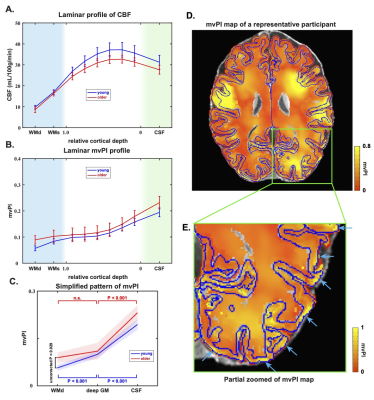 |
1244. Aging
Effect on Cerebral Microvascular Volumetric Pulsatility Revealed
by High-Resolution 4D CBV and ASL MRI at 7T

F. Guo, C. Zhao, Q. Shou, N. Jin, K. Jann, X. Shao, D.
Wang
University of Southern California, Los Angeles, United States
Impact: Our method offers the first in vivo measurement
of microvascular volumetric pulsatility in human brain which
has implications for cerebral microvascular health and its
relationship research with glymphatic system, aging and
neurodegenerative diseases.
|
| 13:27 |
 |
1245. Cerebrovascular
Reactivity to CO2 Differences in Aging Adults Identified by a
Coherence Weighted Frequency-Domain Analysis of BOLD MRI
B. Sussman, H. Wiseman, S. Ranganathan, K. A. Davis, B. Xu,
R. Vintimilla, J. Wood, C. Rickards, N. Pahlevan, K. King,
M. Borzage
Children’s Hospital Los Angeles, Keck School of Medicine, University of Southern California, Los Angeles, United States
Impact: More accessible BOLD and ETCO2 acquisition and
analysis techniques using mild breathing tasks can lead to
more widespread use of BOLD-CVR to CO2 in a variety of
populations and might facilitate more widespread
characterization of cerebrovascular health and risk factors.
|
| 13:39 |
 |
1246. Longitudinal
changes in hippocampal transverse relaxation time are associated
with amyloid deposition

Y. V. Sui, A. Masurkar, T. Shepherd, T. Wisniewski, H.
Rusinek, M. Lazar
New York University Grossman School of Medicine, New York, United States
Impact: Hippocampal
T2 changes indicate potential neural inflammation and
compromised tissue integrity related to Aβ deposition in
preclinical AD. Quantitative T2 may be a valuable biomarker
for identifying these subtle microstructural changes before
brain macroscopic alterations and symptom onset.
|
| 13:51 |
 |
1247. Metabolite
T1 and T2 Relaxation Times in Healthy Aging

S. Murali-Manohar, H. J. Zöllner, K. E. Hupfeld, Y.
Song, E. E. Carter, S. C. N. Hui, C. W. Davies-Jenkins,
D. Simicic, A. T. Gudmundson, G. L. Simegn, V.
Yedavalli, G. Oeltzschner, E. C. Porges, R. A. E. Edden
Johns Hopkins University School of Medicine, Baltimore, United States
Impact: Understanding the life-course of metabolite
relaxation times is a critical pre-requisite to studies of
metabolite concentration across the lifespan. We report
correlations of T1 and
T2 of
metabolites with age, and between T1 and
T2 in
a large aging cohort.
|
| 14:03 |
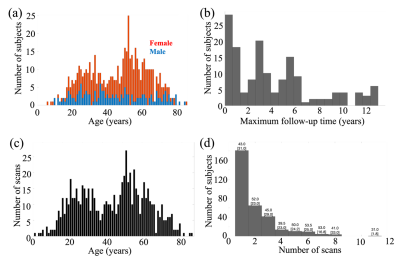 |
1248. Longitudinal
Modeling of Iron Accumulation in the Thalamus and Putamen Using
Change-Point Mixed Effects Analysis

F. Salman, J. Boccardo, N. Bergsland, M. Dwyer, B.
Weinstock-Guttman, R. Zivadinov, G. Wilding, F. Schweser
Buffalo Neuroimaging Analysis Center, Department of Neurology at the Jacobs School of Medicine and Biomedical Sciences, University at Buffalo, The State University of New York, Buffalo, United States
Impact: This study’s normative DGM iron trajectories
provide a benchmark, offering a sensitive longitudinal
biomarker for detecting early pathological changes in
neurodegenerative diseases.
|
| 14:15 |
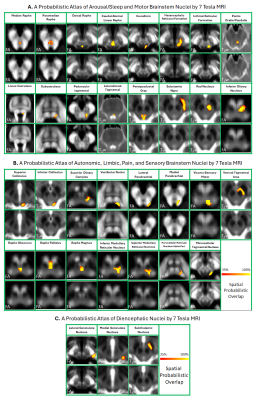 |
1249. The
Brainstem Navigator atlas in in-vivo elderly adults by 7 Tesla
multi-contrast MRI

S. Koley, K. Singh, M. G. Garcia-Gomar, F. F. Hannanu,
M. Bianciardi
Brainstem Imaging Laboratory, Department of Radiology, Athinoula A. Martinos Center for Biomedical Imaging, Massachusetts General Hospital and Harvard Medical School, Charlestown, United States
Impact: This atlas will facilitate brainstem related
research in health and a broad set of brainstem related
disorders, such as sleep, arousal, movement, vestibular,
anxiety disorders, which is currently limited by the
difficulty of localizing brainstem nuclei in conventional
MRI.
|
| 14:27 |
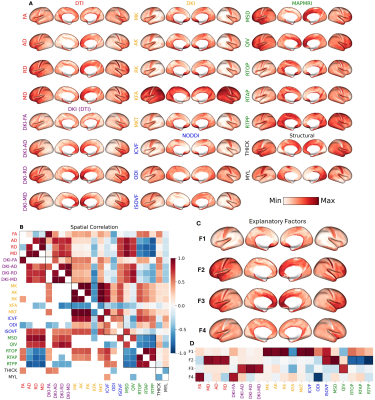 |
1250. Mapping
Human Cortical Microstructure In Vivo with Diffusion MRI

A. Sadikov, H. Choi, J. Xiao, L. Cai, P. Mukherjee
University of California, San Francisco, San Francisco, United States
Impact:
We integrate diffusion MRI gray matter microstructure into the neuromaps framework, which includes molecular, cellular, laminar, dynamic, and functional annotations. We also provide four latent factors that govern cortical microstructural metrics derived using diffusion MRI. |
| 14:39 |
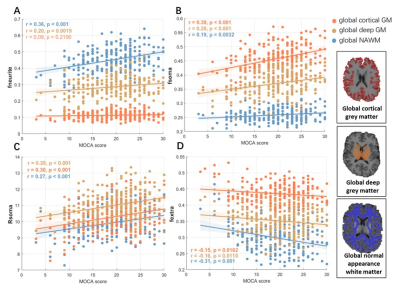 |
1251. MRI
signatures of white matter and cortical microstructure link to
human cognitive impairment and brain risk factors in community
elderly cohort

Y. Li, L. Wang, S. Xu, H. Zhang, H. Li, H. Wang
Institute of Science and Technology for Brain-inspired Intelligence,Fudan University, Shanghai, China
Impact: Using SANDI, we analyzed microstructure,
particularly soma, in an aging cohort with a high-gradient
MRI scanner. A strong correlation was observed between SANDI
metrics and brain function decline, which may contribute to
the neurodegenerative process
|
| 14:51 |
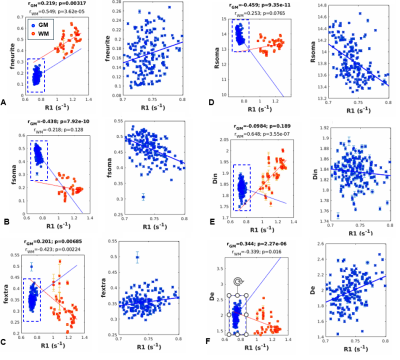 |
1252. Investigating
gray matter microstructure via multi-compartment diffusion model
and cortical myelination in healthy brains
A. Caporale, E. Bliakharskaia, M. Carriero, E. Patitucci, D.
Di Censo, A. Chiarelli, M. Palombo, E. Biondetti, R. Wise
Institute for Advanced Biomedical Technologies, University "G. D'Annunzio" of Chieti-Pescara, Chieti, Italy
Impact: This study enhances the understanding of gray
matter microstructure by revealing the relationship between
metrics from advanced three-compartment diffusion model
(Soma-And-Neurite-Density Imaging) and cortical myelination
(R1). These insights may inform future research on brain
development and pathology.
|
| 15:03 |
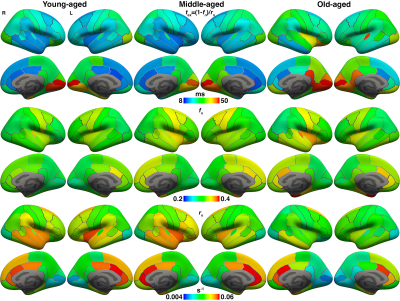 |
1253. Studying
brain microstructure in normal ageing using Neurite EXchange
Imaging (NEXI) at 500 mT/m

K-S Chan, H. Lee, Y. Ma, A. Bhatt, J. Gerold, J. Ford,
S. Y. Huang, H-H Lee
Athinoula A. Martinos Center for Biomedical Imaging, Massachusetts General Hospital, Charlestown, United States
Impact: This
study indicates
age-related microstructure alterations may influence the
water exchange in grey matter, providing a new imaging
phenotype to study neurodegeneration. Developing
NEXI normative data will strengthen our understanding of the
association between water exchange and neurodegeneration
disorders.
|
The International Society for Magnetic Resonance in Medicine is accredited by the Accreditation Council for Continuing Medical Education to provide continuing medical education for physicians.